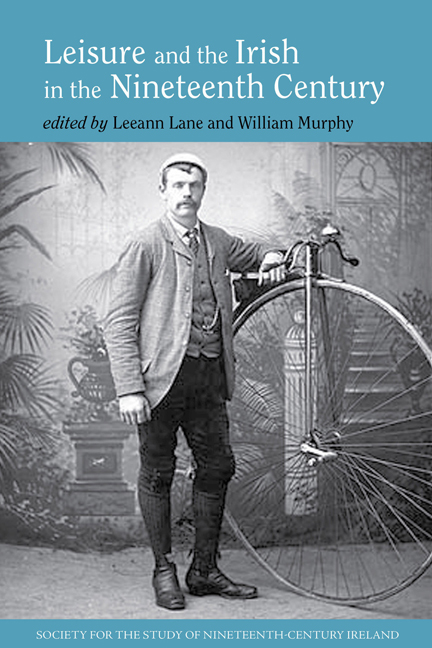Book contents
- Frontmatter
- Contents
- List of Figures and Tables
- Introduction
- Leisure and Associational Culture
- Leisure Spaces
- 3 Muscles and Morals: Children's Playground Culture in Ireland, 1836–1918
- 4 Photography and Leisure: The Rise of the Photographic Studio in Mid- to Late-Nineteenth-Century Dublin
- 5 The Establishment and Evolution of Limerick City Municipal Library, 1889–1938
- Leisure in Literature
- Leisure, Tourism and Travel
- Leisure and Female Élites
- Notes on Contributors
- Index
4 - Photography and Leisure: The Rise of the Photographic Studio in Mid- to Late-Nineteenth-Century Dublin
from Leisure Spaces
- Frontmatter
- Contents
- List of Figures and Tables
- Introduction
- Leisure and Associational Culture
- Leisure Spaces
- 3 Muscles and Morals: Children's Playground Culture in Ireland, 1836–1918
- 4 Photography and Leisure: The Rise of the Photographic Studio in Mid- to Late-Nineteenth-Century Dublin
- 5 The Establishment and Evolution of Limerick City Municipal Library, 1889–1938
- Leisure in Literature
- Leisure, Tourism and Travel
- Leisure and Female Élites
- Notes on Contributors
- Index
Summary
Introduction
The growth in the purchase and consumption of photographic portraits in mid-nineteenth-century Ireland was both a cultural expression of leisure and evidence of its commodification. New technologies, such as the carte-de-visite format, extended photography beyond an élite minority. In addition to the psychological or utilitarian functions of photography, from the 1860s, having one's portrait taken came to play an important part in the performance of respectability and the construction of Irish middle-class identity. A trip to the studio also became a leisure activity in itself and an integral part of the urban experience.
Until the 1860s, the cost of portrait photography was prohibitive for the majority of the Irish population. Photographic historian Edward Chandler notes that before 1860 a medium-sized portrait on paper cost twice the average weekly wage of a working man. Prior to this, the few photographic studios that existed in Dublin mainly offered the expensive once-off daguerreotype process or albumen prints made from a single wet-plate collodion glass negative. Amateur photography was the preserve of the landed classes or the independently wealthy and only a small percentage of the population would have been in possession of photographs of themselves or their families.
The French photographer André-Adolphe-Eugène Disdéri patented the carte-de-visite process in 1854 and it allowed for rapid, cheap production of albumen prints. Disdéri had devised a camera that used multiple lenses to take several images on one photographic plate. This process contained all the hallmarks of modernity: mass production, standardisation and circulation. The reduction in price heralded an increase in studio numbers in Paris and beyond. The carte-de-visite reached the height of its popularity in the 1860s, a decade which, according to Geary and Stark, saw a growth in Ireland's economic performance. The rise in the number of studios is indicative of the increased leisure capabilities of the rising middle classes who had both the financial means and free time to commission, consume and collate photographic portraits into albums.
The growth of Dublin studios
The marked increase in the number of photographic studios from the early 1860s onwards is borne out in evidence from street directories, newspaper advertisements and the studio names on surviving photographs. Figure 4.1, which is based on the numbers of photographic studios listed in Dublin street directories, charts growth between 1860 and 1901. Studios in the capital rose from fifteen in 1861 to a peak of thirty-six in 1868 before plateauing in the mid-twenties for the remainder of the century.
- Type
- Chapter
- Information
- Leisure and the Irish in the Nineteenth Century , pp. 80 - 98Publisher: Liverpool University PressPrint publication year: 2016



